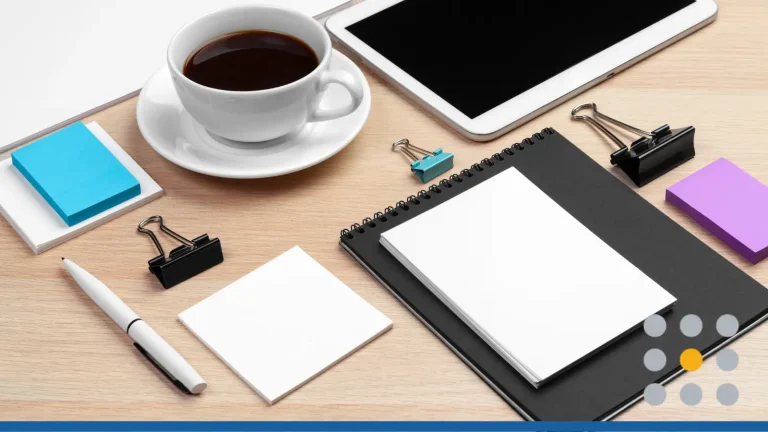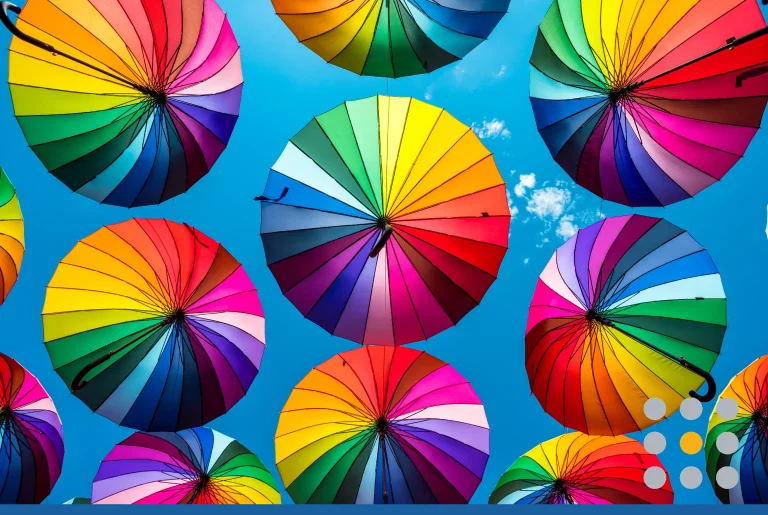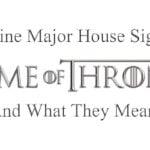Black Friday is the single biggest shopping event of the year.
Online shopping continues to surge in popularity during Black Friday and the holiday season, with online spending breaking new records each year. Holiday shopping behaviors drive both online and offline retail activity, making this period a major driver of consumer engagement.
For small businesses, this yearly retail frenzy means an outsized chance to maximize profit, strengthen customer loyalty, and attract hundreds, maybe thousands of new shoppers.
The holiday shopping season is a window for marketing and sales actions, offering unique chances to capitalize on festive buying trends. You don’t need a mega-budget to compete; what you need is creativity and smart technology.
This guide goes deep into Black Friday marketing strategy: covering actionable ideas, technical advice (especially for Shopify users), month-by-month planning, behavioral psychology, advanced tactics, technology integrations, up-to-date data, and real-world examples.
Everything you need is here for your most successful Black Friday yet!
- The Black Friday Opportunity for Small Businesses
- Timeline Planning: Month-by-Month Framework
- Core Black Friday Marketing Strategies
- Measuring Success & ROI
The Black Friday Opportunity for Small Businesses
Black Friday isn’t simply an opportunity; it’s a retail battleground. While superstores and eCommerce giants spend millions, innovative small businesses win by working smarter, not just harder.
In 2024, retail media ad spend nearly doubled (up 92%), while social media ad spending climbed 35%. In the same period, merchants who prioritized website performance posted the highest conversion rates.
Online stores play a big role during Black Friday, and maintaining your eCommerce store’s technical health is important to handle the increased sales volume and secure a consistent customer experience.
The key? Mix psychology-backed strategies with the right technology and quick, agile planning. Design promotional approaches that attract customers and are tailored to your target customers for maximum impact.
Statistics at a Glance
To understand the scale of Black Friday, take a look at these recent benchmarks:
- U.S. Black Friday online sales: $9.12 billion (2024)
- Merchants using product bundles: 27.4%
- AI chatbot conversion rate boost: 9%
- Store mobile traffic: Over 70% for Shopify merchants
- Average open rate for Black Friday emails: 22% (higher than yearly average)
These numbers confirm one thing: online engagement, mobile optimization, and personalization are the secret weapons of modern Black Friday success.
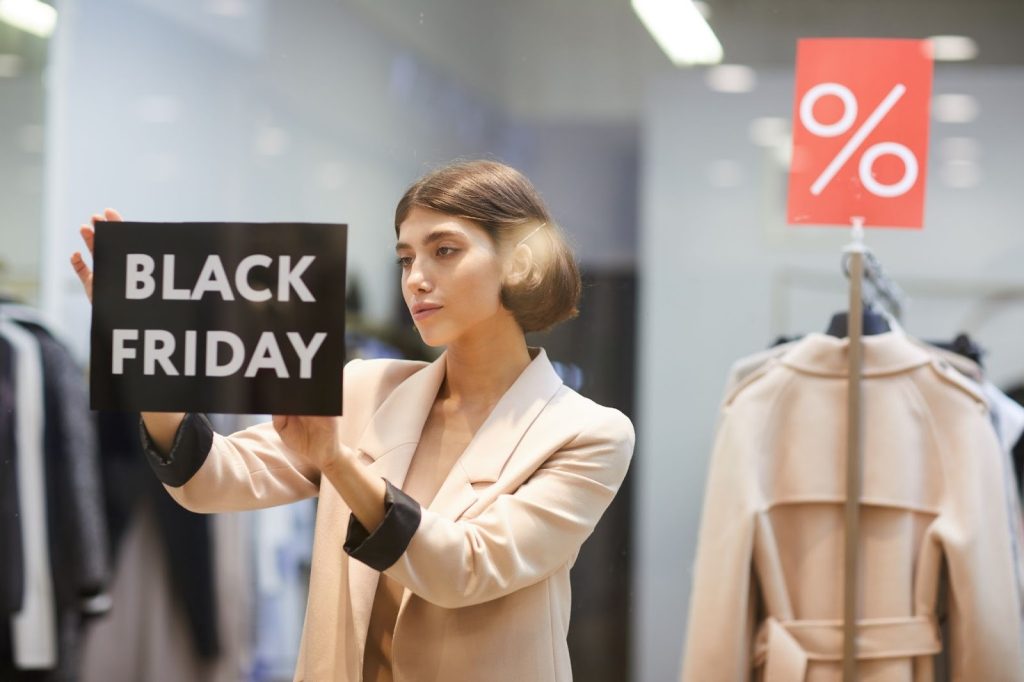
Timeline Planning: Month-by-Month Framework
If you start planning your Black Friday campaign in November, you’re already behind. The most successful brands begin preparing as early as September. This timeline helps you stay organized and ready for the rush. Keep it visible when you make yours!
| Month | Actions & Milestones |
| SeptemberSetting the Stage | September is all about strategy. Define your sales goals, review last year’s performance, plan your inventory, and refresh your website design. Conduct market research to identify emerging trends and start brainstorming teaser campaigns. This is the time to align your brand message with the excitement of the upcoming holiday season. |
| OctoberBuilding Anticipation | By October, it’s time to move from planning to action. Segment your email lists and begin teasing upcoming offers. Post sneak peeks on social media, adjust your checkout flow, and test discount codes to avoid last-minute glitches. Partner with influencers who can help amplify your reach, and create themed gift guides to target different customer segments. |
| Early NovemberCountdown to Launch | Now the energy ramps up. Finalize ad creatives, set up automation workflows (like abandoned cart emails and SMS reminders), and prepare landing pages. Begin your social countdowns and start featuring your gift guides prominently. The goal here is to build excitement and momentum so that when the big day hits, your audience is primed to buy. |
| Black FridayShowtime | This is your moment to shine. Monitor real-time analytics, launch your sales campaigns, and keep your customer support ready for questions or hiccups. Post live updates on social media and engage with shoppers actively. The more visible and responsive you are, the more trust (and sales) you’ll earn. |
| Post-saleKeep the Momentum | Once Black Friday is over, don’t disappear. Extend your offers through Cyber Monday, follow up with personalized thank-you emails, and analyze your performance data. This post-sale window is also the perfect opportunity to turn one-time shoppers into loyal customers through retention campaigns and feedback requests. |
Now, let’s dissect the most important parts of this timeline:
Build Anticipation with Teaser Campaigns
Launch sneak peek email series and social posts to create buzz; reveal products, share sneak peeks of upcoming sales to build excitement, use countdown timers, and preview deal levels.
To further increase anticipation and urgency, consider using pop-ups and pop-ups alongside countdown timers to capture hesitant shoppers and boost engagement.
Email List Building & Segmentation
Use exit-intent popups, spin-to-win wheels, and landing pages to collect emails. With pop-up offers, you can convert visitors who are about to leave your site, especially during high-traffic events like Black Friday, by creating urgency and personalizing messaging.
Segment your audience by purchase history, geography, VIP status, and engagement. Shopify’s Email Marketing app allows easy segmentation.
Social Media Content Calendar
Social media is where the Black Friday buzz happens. Create a detailed content calendar outlining when and what to post. Use a mix of videos, countdowns, polls, and giveaways. Highlight your best deals and show behind-the-scenes preparation to humanize your brand.
Shopify’s Social Media Integrations let you automate and sync promotions across platforms like Instagram, Facebook, and TikTok. Consistency is key, the more your audience sees your message, the more likely they are to remember you on sale day.
Influencer & Partnership Outreach
Identify micro-influencers relevant to your niche. Use Instagram DM or email to propose collaborations or live shopping events, and have influencers promote your exclusive Black Friday deals to their audiences. Shopify Collabs App helps manage influencer partnerships, including payment tracking.
Inventory Planning & Demand Forecasting
Nothing kills momentum like running out of stock mid-sale. Review last year’s data in Shopify Analytics to forecast demand accurately. Identify your bestsellers and consider creating product bundles that move inventory faster. For example, pairing last-season items with new arrivals can increase sell-through rates and average order value.
Setting Goals & KPIs
Set specific targets: revenue (e.g., +30% YOY), conversion rate, average order value, new customer acquisition, and customer lifetime value for long-term profitability. Use Shopify Analytics or Google Analytics for measurable KPIs.
Budget Allocation
Start small but smart. Focus your spend on high-performing channels like email, social ads, and retargeting. Shopify Marketing tools allow you to set daily limits and shift budgets dynamically based on results.
The chief issue is flexibility; don’t lock your budget too early. Let performance guide your decisions.
Technical Preparation Checklist
- Speed: Aim for under two seconds of load time. You can use Shopify’s Theme Analyzer and Google PageSpeed for this!
- Mobile optimization: Customize for devices; buttons, menu, checkout forms. Test your website on various mobile devices to confirm a seamless experience during high-traffic periods.
- Accessibility: High-contrast themes, alt-text for images.
- Backup: Manually back up your store (Admin > Settings > Export) before traffic spikes.
- Checkout: Enable guest checkout, test integrations (Apps > Checkout).
- KPI’s: Track and tag everything with UTM codes for post-analysis!
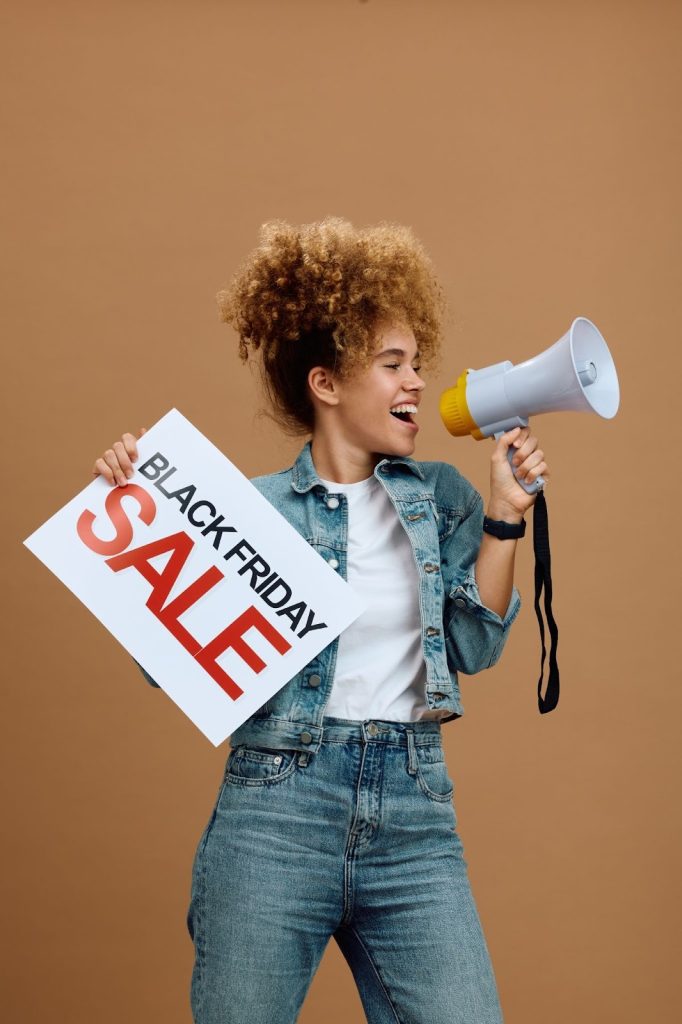
Core Black Friday Marketing Strategies
Email Marketing
- VIP early access: Launch exclusivity campaigns for repeat and existing customers by offering exclusive discounts. Incentivize new customers to join your list by providing early access to Black Friday deals. Use personalized subject lines and Shopify’s Automated Email Sequences (Admin > Marketing > Automations).
- Abandoned cart recovery: Set up Shopify’s “Abandoned Cart Recovery” workflow, adding urgency (“Only 2 hours left!”). Brands achieve up to 45% higher conversion via multi-reminder campaigns.
- Segmented campaigns: Tailor messaging to distinct buyer personas. New subscribers see discovery offers, and high spenders get upsell bundles.
- Post-purchase follow-ups: Send “Thank you” emails, ask for feedback, recommend related items, and launch refer-a-friend requests.
Social Media Marketing
- Platform strategies: Instagram Stories flash sales, Facebook exclusive events, TikTok hashtag challenges. Promote exclusive deals and special deals through targeted social media posts to spark urgency and highlight limited-time offers.
- User-generated content (UGC): Prompt customers to share photos of their purchases; highlight the best entries for four times the engagement.
- Social commerce integration: Enable in-app purchases via Instagram Shopping and Facebook Shops.
- Influencer collaborations: Reward with exclusive codes and share their “unboxings” live. Nike’s Instagram Black Friday campaign used loyalty discounts and influencer videos for “early drop” shoes, spiking engagement.
Content Marketing & SEO
- Gift guides: Create keyword-optimized gift guides (“Best Gifts Under $50,” “Local Gems for Mom”) tailored to different customer interests. Create gift guides that showcase the best Black Friday deals to attract holiday shoppers. Integrate your gift guide into livestream shopping events for interactive engagement.
- Blog content strategy: Weekly posts on prep tips, shopping advice, and brand stories.
- Local SEO: Update Google My Business, collect and reply to reviews, and add geo tags in Shopify settings.
- Video marketing: Produce product tours, expert interviews, and testimonials to increase time-on-page.
Paid Advertising
- Google ads optimization: Use conversion-focused keywords (“Black Friday deals,” “holiday gifts”) and countdown extensions. Run a comprehensive Black Friday marketing campaign that features Black Friday promotions across multiple channels.
- Social media ads: Target website visitors and email subscribers with retargeting ad sets. Use paid ads to amplify your Black Friday promotion.
- Retargeting: Shopify’s “Audiences” app allows pixel tracking for high-intent targeting.
- Budget tricks: Shift funds in real time to best-performing channels.
Psychology-Driven Black Friday Marketing
Understanding how shoppers think is the cornerstone of effective Black Friday campaigns. Interactive campaigns and personalized experiences can also encourage brand loyalty by fostering ongoing engagement and connection. Some psychological triggers include:
- Scarcity: “While supplies last” or “Only 50 left!” pushes purchase urgency.
- Social proof: Display recent sales, customer reviews, and user-generated content.
- Reciprocity: Offer exclusive early access or a gift-with-purchase, prompting shoppers to return the favor by purchasing.
- Commitment and consistency: Reward loyal shoppers for repeat purchases (VIP lists, surprise perks).
- Loss aversion: Emphasize that missing a deal is costly, use phrases like “Don’t miss out!”
Pricing & Promotion Strategies
When it comes to Black Friday success, your pricing and promotions can make or break your results. Shoppers are bombarded with deals, so the way you present your offers, not just the size of your discount, determines whether your brand stands out.
Strategic pricing taps into consumer psychology, while creative bundles and incentives boost cart value and loyalty.
Bundle & Upsell Approach
- Product bundles: Use Shopify’s Fast Bundle app. As a Black Friday marketing tactic, introduce a new deal every hour, such as buy-one, get-one offers, to keep customers engaged and encourage larger purchases.
- Upselling: “Complete the look” add-ons for fashion, “Recommended accessories” for electronics.
- Flash sales: Hourly specials announced by Shopify Push, live social posts.
Incentives
- Free shipping (Shopify Shipping settings)
- Free returns
- Gift-with-purchase (Shopify Discounts > Automatic discounts): Offer a gift with purchase, such as a gift card or product, that can be used for a future purchase. This encourages repeat business and increases customer engagement.
Advanced Marketing Tactics
Once your core Black Friday marketing plan is in motion, it’s time to take things to the next level. Advanced marketing tactics let you stand out in a crowded market, offering experiences that feel more personal, interactive, and seamlessly connected across every channel.
By leveraging AI, gamification, and data-driven insights, you can create campaigns that not only boost conversions but also strengthen your brand’s long-term relationship with customers.
AI Personalization
AI tools (like Insider predictive segments) guide targeted, dynamic offers. Machine learning examines browsing history and buying signals, then automates “You might also like” recommendations.
- Activate Shopify’s Product Recommendation AI
- Deploy Insider or similar predictive apps for segmentation
- Personalize banners, emails, and pop-ups for each shopper segment
AI-driven personalization can also help align offers with your brand’s core values, such as sustainability or ethical practices, and foster brand loyalty by creating more meaningful and relevant experiences for your customers.
Gamification
Who says shopping can’t be fun? Gamification turns your online store into an interactive experience that excites and rewards your audience.
By incorporating playful elements like digital scratch cards, spin-to-win pop-ups, or loyalty-based challenges, you engage customers on an emotional level and encourage repeat interactions.
- Spin-to-win popups: Create excitement using apps like Shopify Wheelio to let customers unlock instant rewards.
- Digital scratch cards: Offer “Reveal your discount!” moments to add surprise and delight.
- Points-earning systems: Use tools like LoyaltyLion or Smile.io to motivate ongoing engagement.
This sense of fun not only fuels conversions but also turns your shoppers into active participants in your brand story.
Omnichannel Integration
Today’s shoppers move seamlessly between devices and platforms, and your marketing should too. Omnichannel integration ensures your brand message, promotions, and inventory are perfectly synced across every touchpoint: website, social media, physical stores, SMS, and email.
With Shopify’s Omnichannel Apps, you can create uniform experiences that meet customers wherever they are.
Brands that master omnichannel strategies see, on average, a 9.5% annual revenue lift, proving that cohesion pays off. No matter if a customer starts on Instagram, checks out in-store, or completes the purchase via email, your campaign should feel unified, personalized, and effortless.
Behavioral Targeting
Understanding why customers act, or don’t act, is key to optimizing conversions. Behavioral targeting lets you respond dynamically to customer intent, delivering tailored offers based on their actions.
Using Shopify Flows, you can automate personalized responses to specific behaviors in real time:
- Abandoners: Send an extra discount to re-engage customers who left items in their cart.
- Browsers: Remind visitors of products they viewed but didn’t buy.
- VIPs: Reward loyal customers with exclusive flash sales or early access offers.
Technology Integration
Behind every successful campaign is a well-oiled tech stack. Shopify’s ecosystem makes it easy to integrate all the tools you need, from communication to analytics, into one powerful marketing engine.
The right technology guarantees our campaigns are efficient, measurable, and designed for growth.
- Email and SMS: Shopify Email, Omnisend, Klaviyo, automate your outreach and segmentation.
- Landing pages: Shogun, PageFly, design high-converting pages for special promotions.
- Popups: Privy, Wheelio, capture leads, and promote flash deals.
- Analytics: Shopify Analytics, Google Analytics, Hotjar, track, visualize, and optimize performance.
- Chat: Shopify Inbox, Tidio, offer real-time support and increase conversions.
- SEO: Plug in SEO, Smart SEO, and make sure your store stays visible during peak traffic seasons.
Combining these tools gives you an end-to-end campaign management system, one that captures data, propels engagement, and delivers a frictionless shopping experience for every visitor.
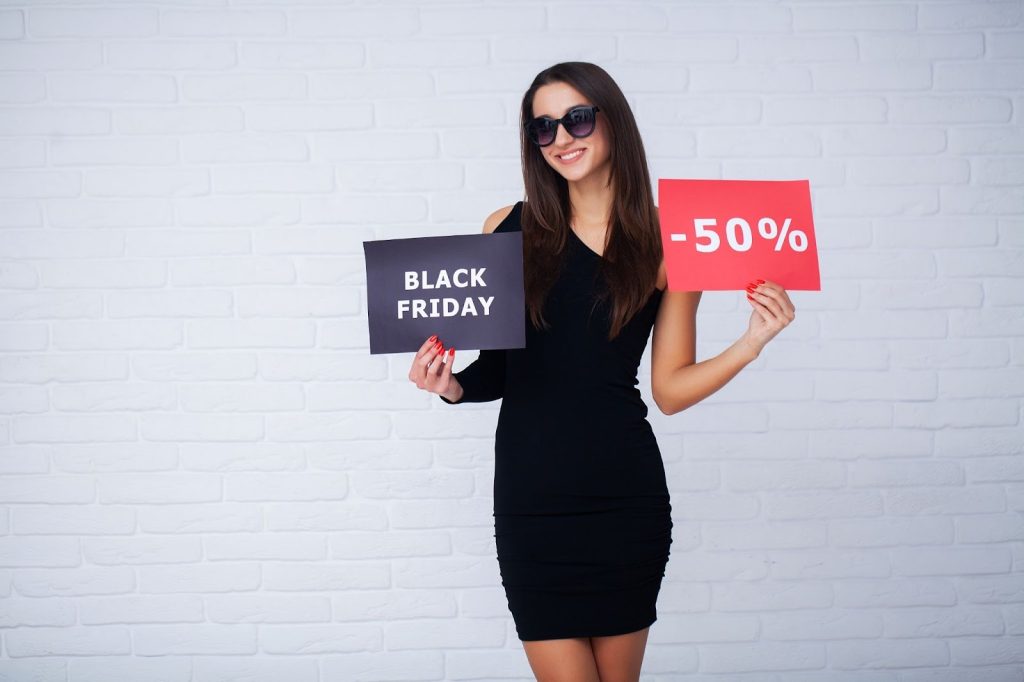
Post-Black Friday Strategies
The shopping frenzy doesn’t end when Black Friday wraps up, in fact, that’s when some of the most valuable opportunities begin. Post-Black Friday is your chance to turn one-time buyers into lifelong customers, extend your sales momentum through Cyber Monday and beyond, and gather the insights that will shape your next big campaign.
By combining smart retention tactics, automated follow-ups, and thoughtful data analysis, you can transform seasonal shoppers into loyal brand advocates and make every sale count long after the discounts fade.
- Cyber Monday and retention: Extend top deals into Cyber Monday, and plan for Cyber Week and the entire Black Friday season to maximize post-event sales. Shopify lets you automate this transition in the same campaign setup.
- Customer retention campaigns: Send loyalty point bonuses to encourage brand loyalty and push future purchase behavior, exclusive previews for new launches, and refer-a-friend deals.
- Collect reviews and feedback: Deploy post-purchase surveys, offer discounts for feedback, and highlight top reviews in future campaigns.
- Data and Analysis: Review KPIs, track each channel’s ROI, and identify what drove the highest conversion rates, bounce reduction, and customer satisfaction.
Measuring Success & ROI
After the rush of Black Friday sales, the next step is understanding how well your campaigns truly performed. Measuring success isn’t just about counting dollars; it’s about identifying what worked, what didn’t, and how to improve for next year.
Analyzing your results gives you clarity on where your marketing investments paid off and where you can optimize further. ROI tracking helps you turn data into actionable insights that fuel smarter decisions and stronger growth.
Key Metrics
Numbers tell a story if you know where to look. The following metrics provide a clear picture of your campaign’s performance:
- Total revenue and Average Order Value (AOV): Measure overall sales and the average amount spent per customer. A rising AOV means your bundling, upselling, or promotional strategies worked effectively.
- Conversion rate: Aim for a conversion rate above 5% during Black Friday/Cyber Monday (BFCM), but always benchmark against your industry average.
- Bounce rate: Keep this under 40% on your key sale pages. High bounce rates might indicate slow load times or unclear offers.
- Customer acquisition: Track how many new customers you gained, and how many existing ones you successfully re-engaged.
- New vs. returning customers: This ratio helps you understand brand loyalty and campaign reach.
- Email/SMS open and click rates: These numbers show how engaging your communication really was and which offers resonated most.
Together, these metrics reveal not just performance, but patterns, helping you understand buyer behavior and refine your approach for future campaigns.
Analytics & Reporting
You can’t improve what you don’t measure. Analytics tools are your compass after the sales storm, guiding you through data to uncover meaningful insights. Integrating platforms like Shopify Analytics, Google Analytics, and the Facebook Pixel gives you a 360° view of your customer journey, from ad click to checkout.
Use UTM codes on all promotional links to track which channels and campaigns drive the most conversions. Then, create simple dashboards to visualize performance trends at a glance. Regardless of whether you’re tracking email engagement or ad ROI, clear visuals make it easy to communicate results with your team.
ROI Calculation
Understanding your Return on Investment (ROI) is the ultimate measure of your campaign’s profitability. It tells you whether your marketing dollars turned into meaningful growth. The formula is simple:
ROI = (Net profit ÷ Total marketing cost) × 100
By comparing this year’s ROI against last year’s benchmarks, you can identify areas of improvement and pinpoint which tactics delivered the strongest results.
For example, if your paid social ads drove high traffic but low conversions, you’ll know to refine your targeting next time. Conversely, if your email campaigns yielded strong returns with minimal spend, that’s a signal to double down on email marketing. ROI analysis helps you make every future campaign more efficient and more profitable.
Tools & Resources
Technology makes tracking success easier than ever. The right tools can automate reports, highlight trends, and confirm nothing slips through the cracks. Here are some essentials to add to your Black Friday marketing toolkit:
- Design and branding: Free Logo Services Logo Maker, maintains your logos consistently, giving you professional branding across campaigns.
- Email Marketing: Shopify Email, Klaviyo, Omnisend, perfect for automations, segmentation, and detailed analytics.
- Social Media Management: Buffer, Hootsuite, and Shopify Social Integrations, streamline post scheduling, track engagement, and monitor audience sentiment.
- SEO Optimization: Plug in SEO, identify search visibility opportunities, and fix website issues that may impact ranking.
- Discounts and Bundles: Fast Bundle and Automatic Discount, simplify promotions, measure redemption rates, and track AOV lift.
- Reporting and Analytics: Google Analytics and Shopify Analytics, the backbone of your performance tracking, helping you understand exactly where your growth is coming from.
Combining these tools creates a data-driven ecosystem that supports smarter marketing, deeper insights, and continuous improvement, turning every Black Friday into a learning opportunity and a bigger win.
Conclusion
Black Friday is your chance to shine brighter than the big brands. With the right mix of psychology, planning, technology, and creativity, your small business can not only survive but it can thrive. This is the moment to connect, impress, and convert like never before. Start early, stay flexible, and use every tool at your disposal to make this your best Black Friday yet.
Your next step? Use Free Logo Services to explore logo options when you create your next Black Friday strategy. Create your perfect design, and set your strategy on the right path to visual success!
FREQUENTLY ASKED QUESTIONS
How early should Black Friday planning start?
Begin in September, use a month-by-month framework, from goals and inventory to campaign creation and testing.
What actionable tactics generate the best results?
Bundle deals, segmented email campaigns, influencer partnerships, and omnichannel retargeting yield strong ROI, especially with tools available in Shopify.
Highlight your best deals in special collections, promote exclusive Black Friday deals, and offer gift wrapping as an upsell to increase order value and customer satisfaction.
Can small stores compete with big brands?
Absolutely! Focus on hyper-personalized service, unique bundles, and authenticity-driven marketing. Targeted Black Friday shopping campaigns and exclusive Black Friday deals can help level the playing field and attract new customers.
How do I implement AI and personalization?
Start with Shopify’s built-in recommendations, then layer apps like Insider and Klaviyo for dynamic offers and predictive segments.
What technical steps do I need on Shopify?
Optimize speed, mobile checkout, run test transactions, and ensure all discount codes work before the rush; monitor with Shopify’s dashboard.
What if my website crashes?
Have backup plans with alternate checkout portals, contact info for IT support, and frequent monitoring to catch issues fast.
How does psychology drive results?
Scarcity, urgency, and social proof motivate purchases. Use countdowns, customer reviews, and share behind-the-scenes content for trust and excitement.
How should I analyze my campaign?
Track sales, conversion, bounce rate, customer retention, and campaign ROI; leverage Shopify and Google Analytics for metrics.
